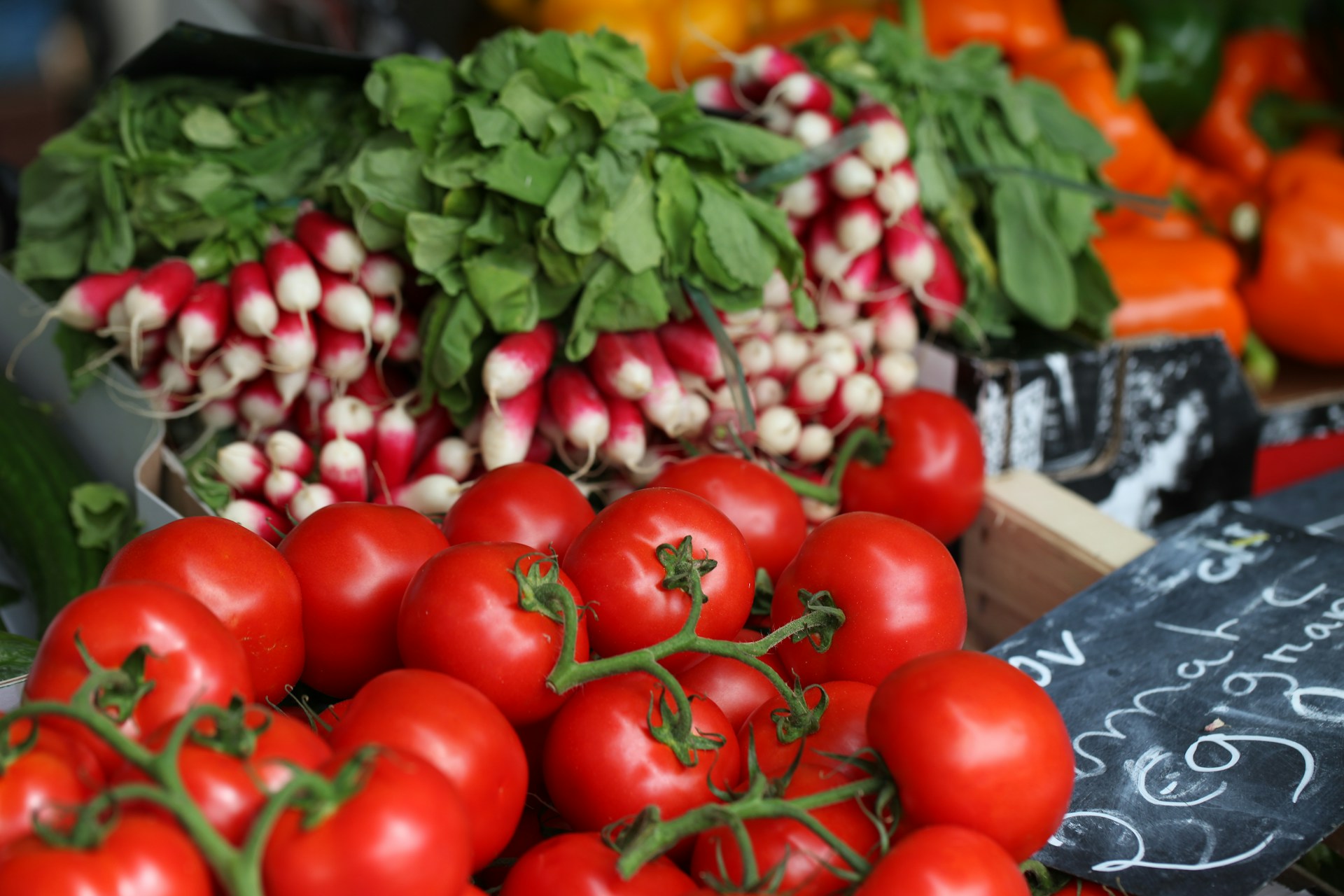As we live in an era of rapid technological advancement, every industry faces the challenge of adapting to new innovations.
Agriculture, specifically the produce sector, is no exception and has been greatly affected by the evolution in genetically modified organisms (GMO) technology.
The rules governing GMOs are constantly being redefined, causing various implications for produce growers worldwide.
Understanding these regulations is vital in maintaining a competitive edge in the market.
In this article, we delve into the recent changes in GMO regulations and explore their impact on the niche of produce growers.
Emphasizing the salient regulatory modifications, we aim to provide a comprehensive overview of these changes and their far-reaching consequences in the agriculture world.
Contents
Gmo Regulation Innovations Affecting Produce Growers
1. Mandatory GMO Labeling Laws
Undoubtedly, mandatory GMO labeling laws serve as a primary regulatory innovation that profoundly impacts produce growers.
In recent years, the demand for transparency in food production has significantly increased, reflecting the varying perspectives of consumers towards genetically modified organisms (GMO).
Consumer’s right to know what they are consuming has pushed lawmakers, both at national and international levels, to establish compulsory labeling of GMO products.
This mandatory approach necessitates that produce growers clearly identify any genetically modified ingredients in their products’ labels.
Such a regulatory requirement provides a vehicle for traceability, enabling consumers to make informed decisions based on their preferences and perceptions of GMO foods.
The implementation of these strict labeling requirements invariably poses a significant challenge to produce growers as they must ensure full compliance to avert any legal repercussions.
Produce growers are now tasked with the burden of monitoring and documenting the source of all ingredients used in their products, which might be time-consuming and costly.
Producer’s failure to adequately label GMO ingredients could result in legal penalties and damage to their brand reputation which further emphasizes the importance of compliance.
Moreover, these comprehensive GMO labeling laws also necessitate a shift in production processes, particularly with regards to segregation and traceability.
Produce growers may need to separate GMO and non-GMO ingredients during production to avoid cross-contamination, thereby further increasing operational complexity.
The necessity for differentiation has even led to certain produce growers opting out of GMO products entirely to ease the burden of compliance and labeling.
Simultaneously, GMO labeling laws have also led to the evolution of the organic segment in the agricultural sector.
As more consumers favor non-GMO products, producers are driven to meet this demand by boosting their production of organically grown items, leading to the expansion of organic farming.
While these laws considerably impose additional responsibilities on farmers, it is essential to note that they are not entirely disadvantageous.
With a straightforward identification of GMO products, farmers can potentially leverage this transparency to build trust and loyalty among their consumers by establishing the safety and nutritional equivalency of their GMO products.
Consequently, the mandatory GMO labeling laws, while presenting challenges, offer produce growers an opportunity to navigate innovative marketing strategies and adapt to the ever-evolving consumer landscape.
2. Stricter GMO Import/Export Rules
Genetically modified organisms, or GMOs, have become a growing part of the global agricultural industry.
However, regulations surrounding the import and export of these products are subject to ongoing debate.
Currently, international trade policies vary greatly from one nation to another with some countries having strict GMO rules whilst others adopt a more relaxed approach.
For instance, the European Union has in place very strict regulations concerning GMO products that demand rigorous risk assessment as well as mandatory labeling.
The recent shift toward stricter import and export rules for GMO crops has made significant impacts on produce growers.
The creation of stricter rules has been driven mainly by the public’s increasing interest in food safety, environmental preservation, and maintaining biodiversity.
Vigorous GMO testing, stricter sanitary protocols, and advanced system controls are part of the proposed improvements in import/export rules to enhance produce safety and ensure consumer trust.
Those advocating for stricter GMO import/export rules argue that more rigorous regulations can lead to increased accountability in the agricultural industry.
However, for many produce growers, the implementation of stricter GMO import/export rules can present significant challenges and might even create trade barriers.
For example, produce growers have to invest in advanced equipment for GMO testing, adapt to complex compliance protocols, and often suffer from increased production costs due to these regulations.
Moreover, stricter GMO rules may potentially limit the export opportunities for GMO growers in countries where these products are in high demand.
This means that producers must adapt and innovate to stay competitive in these areas with evolving import/export rules without risking the quality of their produce.
To summarize, stricter GMO import/export rules not only affect the global agricultural industry but specifically impact produce growers.
Though these rules bear notable challenges, they also present opportunities for producing growers to pivot towards a more sustainable and safe farming practice.
Overall, understanding the implications for this changing landscape will be essential for the sustainability and success of the agriculture industry as a whole.
3. Enhanced GMO Farmer Licensing Requirements
In the evolving field of genetic modification, it is increasingly significant to craft and implement enhanced GMO farmer licensing requirements.
Not all farmers may have the knowledge or skills necessary to handle GMO crops responsibly, and this can create a broad range of problems, both for the environment and for human health.
Increasing education and competency requirements for GMO farming licenses could help ensure that only those who are exceptionally knowledgeable and experienced with GMO crops are granted permission to grow them.
This kind of shift in policy could considerably advance the safety and sustainability of GMO farming, ensuring a future where genetically modified crops are produced by only authorized and proficient hands.
It is important to note that enhancing licensing requirements will not only impact farmers, but also regulatory bodies and educational institutions.
Regulatory bodies would need to modify their policies and processes, and educational institutions would need to develop and offer more advanced and in-depth training for potential GMO farmers.
This shift would likely lead to a demand for a different kind of agricultural education – one that not only covers traditional farming methods, but also dives deep into the complexities and intricacies of GMO management.
For the farmers who do obtain these enhanced licenses, there would likely be a host of new opportunities.
These farmers could market themselves as top-tier GMO specialists, positioning themselves at the forefront of a rapidly evolving industry.
They might also find themselves with increased business opportunities as consumers and companies alike seek out their expertise and high-quality GMO crops.
Beyond individual benefits, enhanced GMO farmer licensing requirements might also lead to industry-wide improvements in safety and sustainability.
The increased rigor and structure could help curtail rogue GMO farming operations and encourage ethical, responsible practices throughout the industry.
However, such a policy change would not be without controversy or resistance.
Many farmers may balk at the increased educational and competency requirements, viewing them as an unnecessary burden rather than a necessary step in the evolution of the farming industry.
Still, with the right education and support, the industry as a whole might come to see enhanced licensing requirements as the key to sustainable, safe GMO farming.
For all these reasons, it is clear that enhancing GMO farmer licensing requirements can significantly affect the landscape of GMO regulation and the future prospects of produce growers.
4. Advanced GMO Crop Testing Protocols
As part of the ongoing innovation in GMO regulation, enhancing crop testing protocols has been a key area of focus.
Advanced GMO crop testing is integral to ensuring food safety and environmental sustainability.
The aim is to implement stringent, scientifically validated methodologies for assessing the potential risks of GMO crops.
These protocols are not only crucial at a local level but also have important implications for global GMO trade and commerce.
In particular, they help to meet the regulatory requirements of countries that import GMO crops, thereby facilitating international trade.
Developing better protocols also highlights the scientific community’s commitment to making GMO technology safe and more comprehensible to the public.
The advanced testing protocols involve several stages, including molecular characterisation of the genetic modification, comparative assessment, and evaluation of potential toxicity and allergenicity.
Moreover, the protocols should be designed in a manner that they can be regularly updated as scientific understanding and technology progress.
Another significant aspect is the assessment of potential environmental impacts of GMOs.
This includes investigating the likely effects on non-target organisms, changes in agricultural practices, and potential for gene transfer.
Proactive screening for potential adverse effects is much more effective, and public-friendly, than reacting to hazards after they occur.
Thus, such robust, comprehensive testing protocols form the cornerstone of responsible GMO use and regulation.
It is also notable that advanced GMO crop testing protocols contribute directly to the transparency of GMO technology.
It allows the public and the regulatory authorities to see the rigorous scientific analyses that each GMO crop must undergo before it can be approved for cultivation or consumption.
Consequently, this can help alleviate some of the public concerns regarding GMOs by providing accessible, reliable data directly from the source.
This reflects the broader trend for greater openness in GMO policy-making and better science-communication about the risks and benefits of GMOs.
Overall, continual refinement of GMO crop testing protocols is a necessary and constructive part of the innovation process in GMO regulation.
5. GMO Cross-Contamination Prevention Standards
The agricultural sector is making waves with the innovation of genetically modified organisms (GMO) but with it comes the need for stricter GMO cross-contamination prevention standards.
These preventive measures ensure the protection of both GMO and non-GMO crops from accidentally mixing, creating undesirable hybrids that may result in unforeseen consequences.
It is crucial to create a delicate balance where both GMO and non-GMO crops can thrive without the risk of cross-contamination.
One way this can be achieved is by implementing adequate buffer zones between GMO and non-GMO fields as a standard practice.
This strategy would minimize the risk of pollen drift ensuring that there are distinct boundaries restricting the movement of GMO elements to non-GMO fields.
Although, stipulating such buffer zones may pose a challenge, it is a necessary hurdle to ensure that integrity of both GMO and non-GMO crops are maintained.
Furthermore, it is also essential to implement strict harvesting, storage, and transportation protocols designed to prevent cross-contamination.
Guidelines need to be formulated such that there is little to no chance of GMO crops mixing with their non-GMO counterparts during these processes.
Standard procedures for cleaning equipment used in GMO fields before being employed in non-GMO fields should also be enforced.
This is to reduce the possibility of genetic material transfer through soil particles or residual plant matter.
At any stage, it is important to monitor and detect possible contamination events in a timely manner, enabling corrective measures to be taken.
Implementing advanced GMO testing techniques at various stages of crop development can be a step in this direction.
Regulatory bodies also need to enforce the adequate labeling and traceability of GMO crops, helping identify their origins in case a contamination event occurs.
Finally, the introduction of GMO contamination liability laws may also serve as a significant deterrent, making those who cause GMO contamination liable for its consequences.
In summary, with the increasing usage of GMOs in agriculture, GMO cross-contamination prevention has become of utmost importance, and requires rigorous standards and robust measures to ensure its effectiveness.
The Bottom Line
Through the comprehensive examination of the other areas, it is clear that there is a need for significant changes to boost the overall safety and transparency of GMO production and trade.
The implementation of obligatory GMO labeling regulations, stricter import/export guidelines, enhanced farmer licensing requirements, advanced crop testing protocols, and robust cross-contamination prevention standards are all crucial aspects of this transformation.
Measures like these will not only protect consumer rights but will also ensure environmental safety and secure farming practices.
Ultimately, these measures will put us on a path towards a more sustainable, transparent, and safer future for GMO cultivation and consumption.
It’s a challenge that requires global cooperation and commitment, but the benefits are worth the effort.




